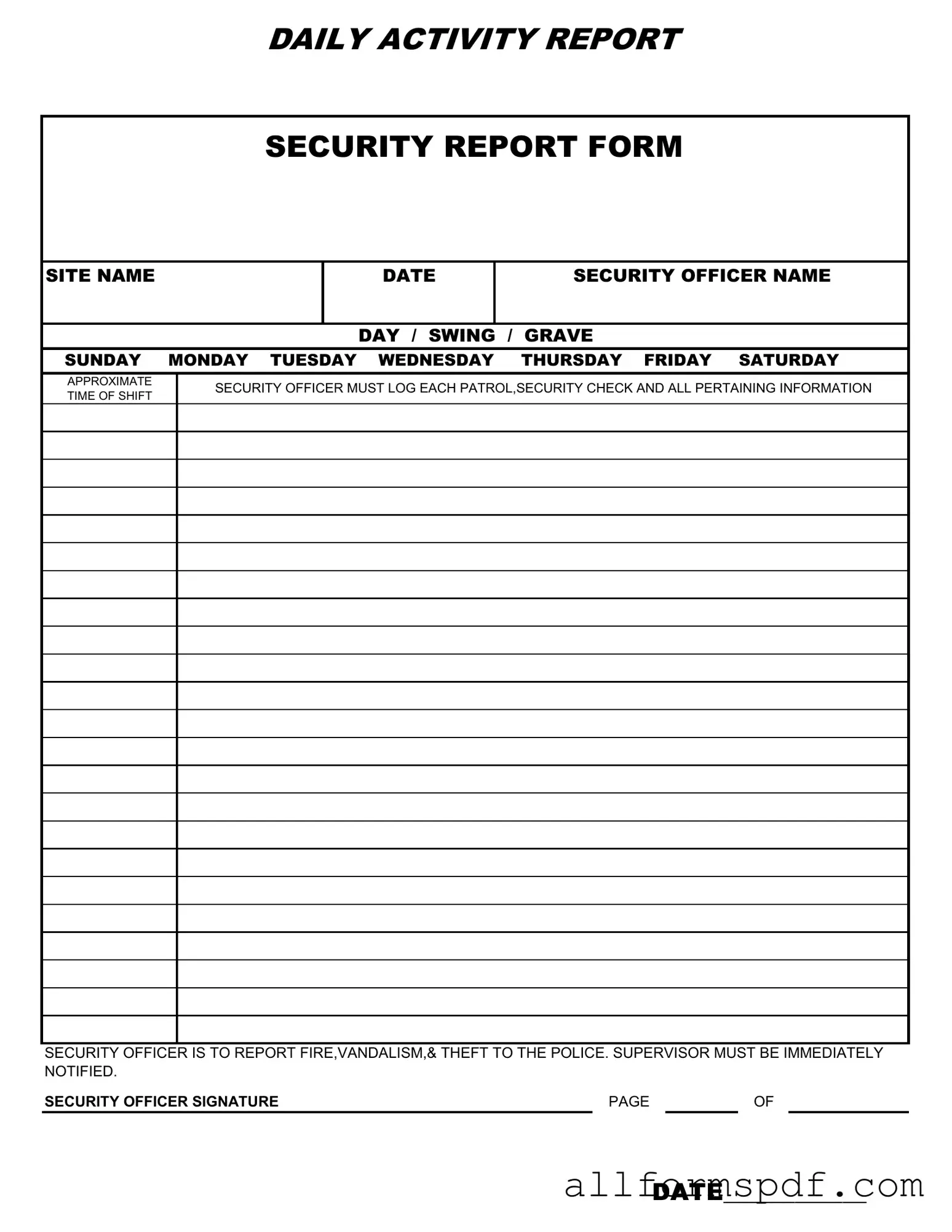Filling out the Security Guard Daily Report Sample form requires attention to detail. One common mistake individuals make is neglecting to include the site name. This omission can lead to confusion about which location the report pertains to, especially if multiple sites are being monitored.
Another frequent error is failing to specify the date. Without a clear date, the report loses its relevance and may complicate record-keeping. It is essential to ensure that the date is accurate to maintain a reliable log of activities.
Security officers sometimes forget to indicate their name and shift type, such as day, swing, or grave. This information is vital for accountability and for tracking who was on duty during specific incidents.
Additionally, many individuals overlook the section for approximate time of shift. Providing this detail is crucial for understanding the context of the report and aligning it with other records or incidents that may have occurred.
Another mistake occurs when officers do not log each patrol or security check. This lack of documentation can hinder the ability to respond to incidents and may result in gaps in security coverage.
Moreover, some security officers fail to report incidents such as fire, vandalism, and theft to the police as required. This oversight not only compromises safety but also violates protocols that are in place to protect the property and individuals involved.
In addition, the requirement for the supervisor to be notified immediately is often ignored. Timely communication is essential in emergency situations, and neglecting this step can exacerbate issues.
Lastly, security officers sometimes forget to include their signature on the report. This final step is crucial for validating the report and confirming that the information provided is accurate and complete.
